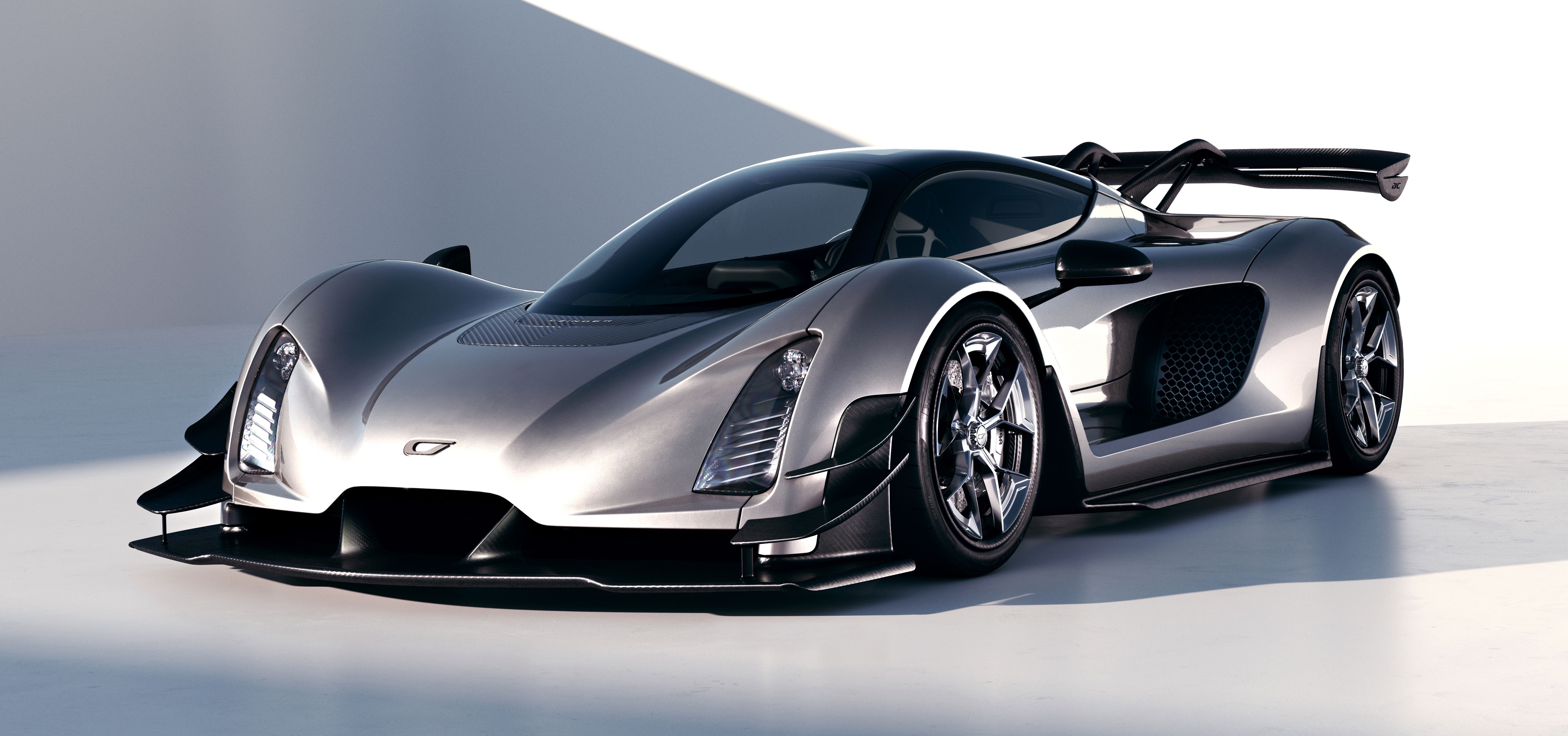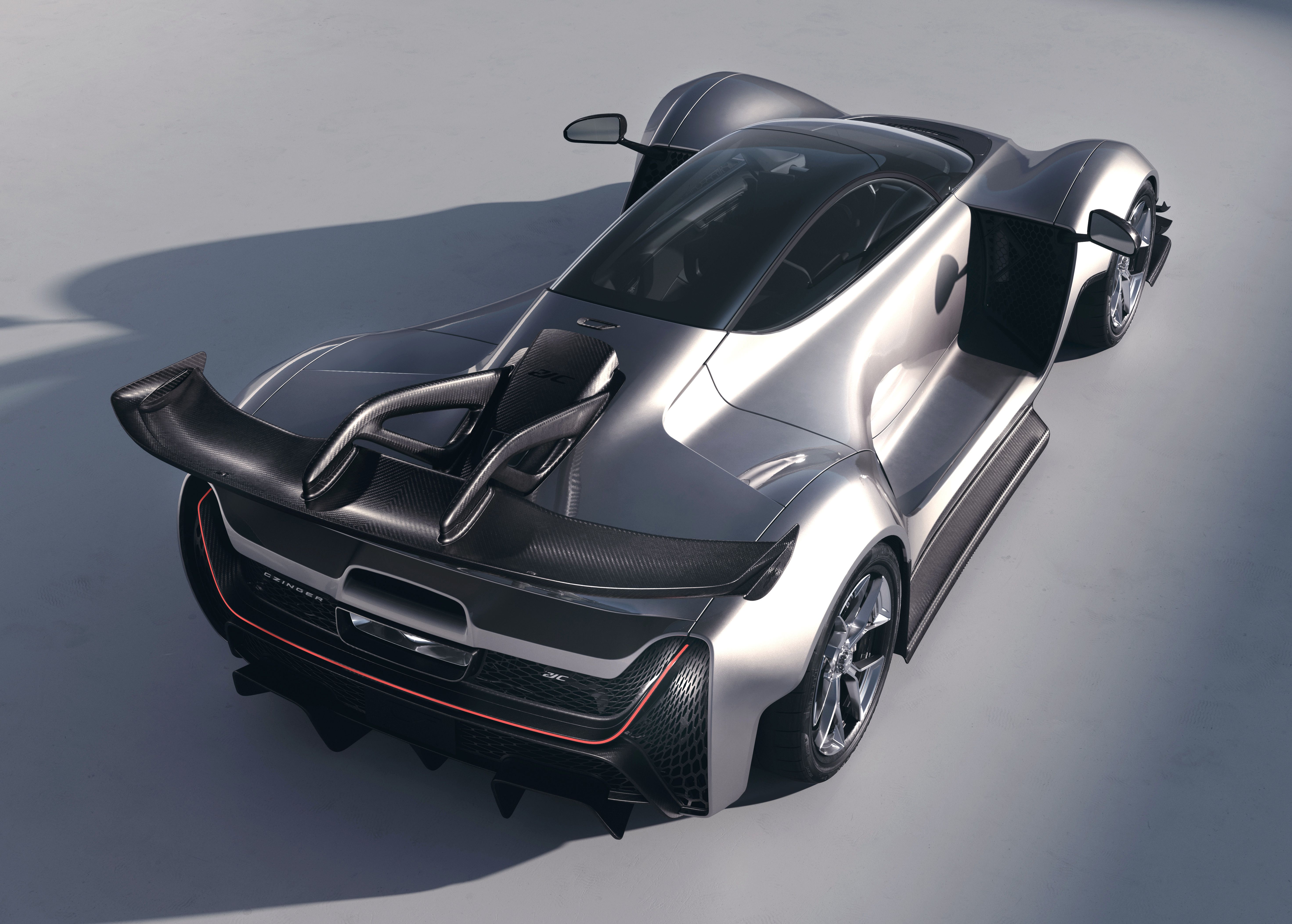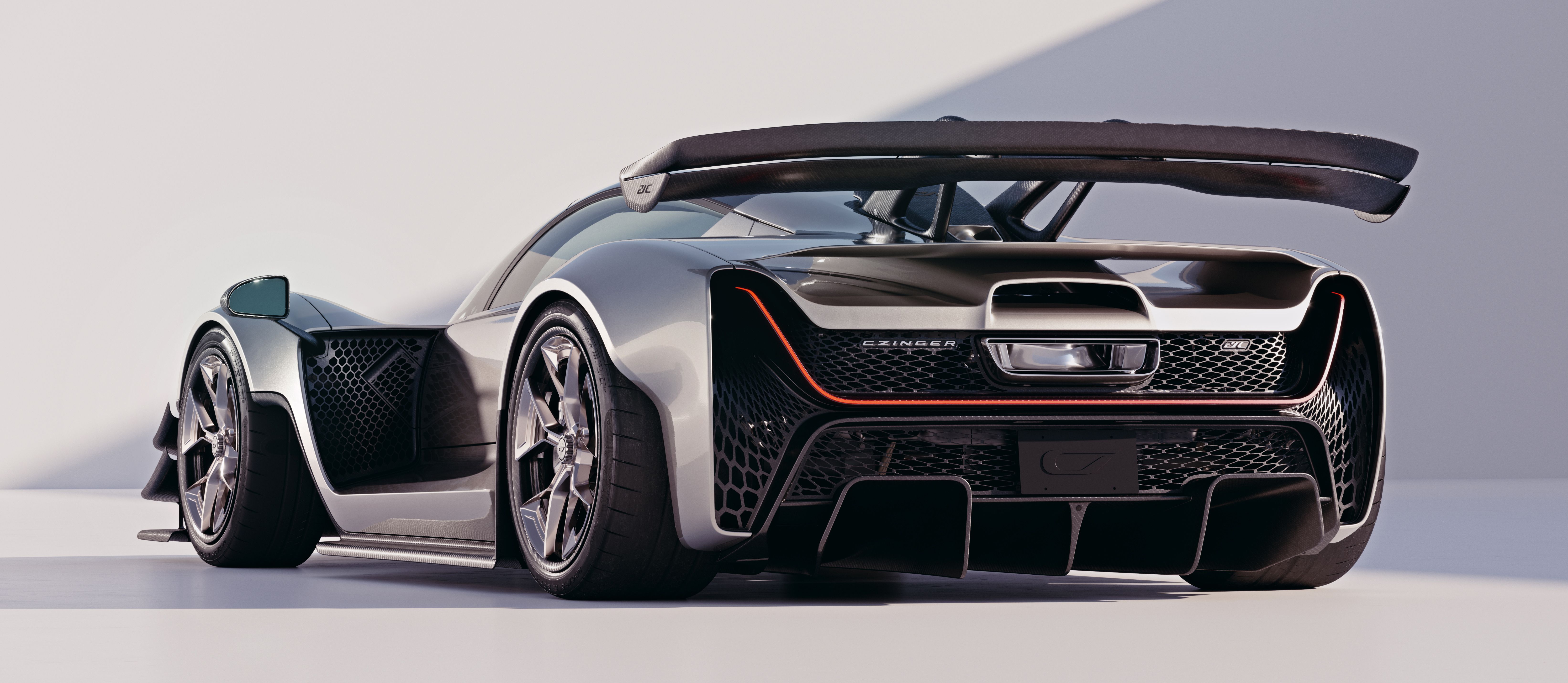Back in February of 2020 Czinger debuted the 21C, a car we billed as the model that would bring the hypercar crown to America. Featuring a unique V-8 engine, tandem seating, and AWD, the C21 will only be produced in 80 examples, and now we finally get to see what the actual production version looks like. At first glance, it hasn’t changed much, but there are a handful of upgrades that make it even better than expected.
The Czinger 21C Somehow Got Better
First and foremost, the production version of the 21C is now wider than the concept that we saw back in early 2000. We don’t have specifics by how much, but it’s now 80.7-inches wide. The big news, however, is what’s happening underneath that aggressive body. The 2.88-liter flat-plane crank V-8 and the two motors in the front are good for a combined power output of 1,250 horsepower – an improvement of 17 ponies over the original concept. When the original concept was released, we were shocked by its top speed capability of 268 mph, but somehow Czinger has managed to increase that to 281 mph if you activate the car’s optional “vmax configuration.”
The Czinger 21C’s straight-line performance is downright crazy, with the 62-mph sprint taking 1.9 seconds, which is on par with the recently revealed Rimac Nevera EV, and the sprint to 186 mph takes just 13.8 seconds. Put it to the floor and race to 248 mph, and you’ll get there in just 21.3 seconds! Part of the performance can be attributed to the super-fast and ultra-light automated manual gearbox, but what’s probably the most interesting fact outside of performance is that the 21C is actually eco friendly and is capable of running on several different fuels, including carbon-recycled methanol and other various e-fuels that will allow it to operate as a zero-emissions vehicle.
2022 Czinger 21C specifications
|
Powertrain |
2.88-liter flat-plane crank V-8 + two electric motors |
|---|---|
|
Power |
1,250 HP |
|
Top Speed |
281 mph |
|
0 to 62 mph |
1.9 seconds |
|
0 to 186 mph |
13.8 seconds |
In the end, the Czinger 21C isn’t just unique because it’s an American hybrid hypercar or because of its extreme performance or zero-emissions capability. It’s also unique because it’s 3D printed and robotically assembled – something that hints toward what the manufacturing of vehicles will look like in the future as more and more automation and 3D printing becomes common place.



